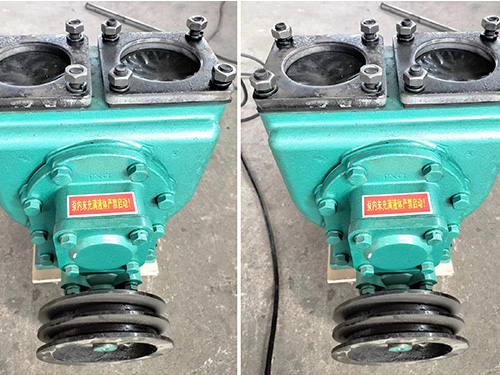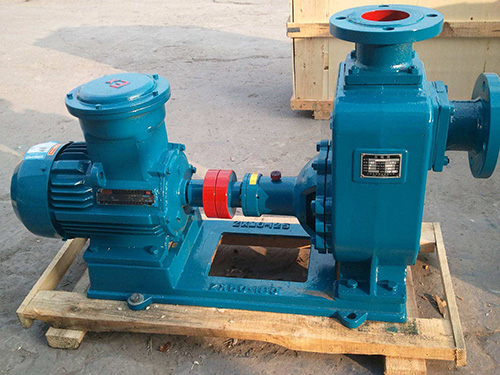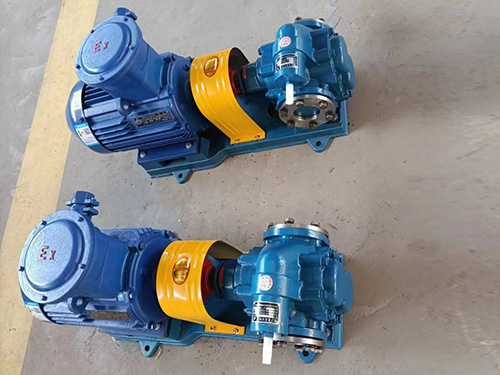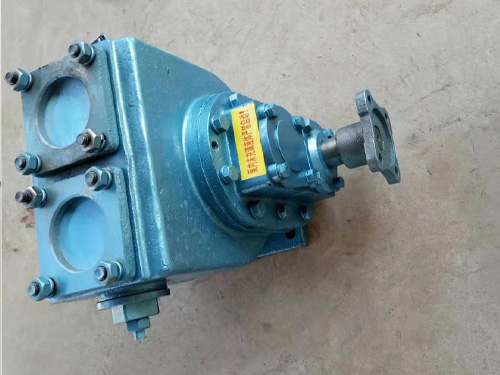The Noise Mechanism and Control Characteristics of LC Roots Pump
2023-11-17 14:08:22
1、 The noise mechanism and control of LC Roots pump
LC Roots pump (hereinafter referred to as LC Roots pump) is a vacuum pump with high pumping speed, fast starting, small volume, convenient operation and maintenance, widely used in various fields such as aerospace, electrical, chemical, pharmaceutical, and light industry.
. It has four types, namely ordinary LC Roots pump, air-cooled LC Roots pump, LC Roots pump, and wet LC Roots pump. Ordinary LC Roots pumps do not allow direct discharge to the atmosphere and can only operate with a front stage pump. Its working pressure difference is not large, so the pump temperature is not high; The air-cooled LC Roots pump can discharge directly into the atmosphere and withstand a large pressure difference during operation. The heat generated during the compression process will cause the LC Roots pump, especially the rotor, to generate severe heat. Therefore, cooled gas or atmosphere is injected into the middle two sides of the pump body inlet and outlet to directly cool the hot rotor. Therefore, it is called an air-cooled LC Roots pump; The LC Roots pump is a combination of air-cooled LC Roots pumps that can directly discharge into the atmosphere, but due to the relatively small pressure difference between each stage, there is no need to use gas to cool the rotor; The wet LC Roots pump is also a type of pump that is directly discharged into the atmosphere. Its characteristic is to inject a small amount of water into the pump chamber, which plays a cooling role on the one hand, and more importantly, acts as a water seal, improving the volumetric efficiency of the pump. Therefore, it is called a wet LC Roots pump. Due to the different working principles, working ranges, and applications of the four Roots mentioned above, their noise mechanisms and methods of control and noise are also different1. Ordinary LC Roots Pump
1.1. Motor Noise
Currently, the quality of motors varies, and motor noise often masks the noise of LC Roots pumps. Firstly, fan noise is generally high, and according to analysis, it should be caused by plastic fan deformation.
; The second is the bearing noise caused by the use of poor quality bearings 1.2. LC Roots Pump Noise 1.2.1. rotor collision noise includes collision noise between rotor and rotor, rotor and pump body, and rotor and side cover. The main reasons for this are: insufficient stiffness of the shaft, radial displacement of the rotor and gear positioning on the shaft, excessive or insufficient gear clearance, and excessive axial clearance of the bearings1.2.2, Gear Noise
The factors that affect gear noise are not only the machining accuracy of the gear itself, but also the parallelism and center distance of the two rotor shafts where the gear is installed.
1.2.3 Bearing Noise
In addition to the accuracy of the bearing itself, inadequate design may also cause an increase in bearing noise, such as excessive interference in the installation of the inner and outer rings of the bearing, insufficient shaft stiffness, insufficient supply of lubricating oil, and contamination by dust, water, corrosive gases, and liquids.
2. Air cooled LC Roots pump
Air cooled LC Roots pump uses gas to cool the heat generated during the compression process. Due to uniform heat dissipation, it can work under high pressure difference and high compression ratio.
. If the gas discharged by the pump is relatively clean, the gas discharged by the pump can be cooled and returned to the pump for cooling (through the return cooling air pipe). At this time, the pump outlet is equipped with a composite, so the return cooling air will not produce large noise. If the gas discharged by the pump contains other harmful substances and returns to the pump, it will have a negative impact on the pump's operation. Clean gas or atmosphere can be used to enter the pump through the cooling air duct for cooling. At this time, intake noise will be generated. Due to the large intake volume and pressure difference, the noise is also very high, up to 100-110dB (A), which belongs to medium and high frequency noise, and is mainly high-frequency. It is relatively simple and can be easily silenced using resistance (dashed line in Figure 1)2.1 Noise Mechanism and Noise Reduction
The air-cooled LC Roots pump has two functions: firstly, it can be equipped with a front stage pump to work under high vacuum like a regular LC Roots pump, and its noise is the same as that of a regular LC Roots pump;
; Secondly, it is possible to directly exhaust the atmosphere without the front stage pump, which is its major feature. At this time, its exhaust noise is very high, especially when the pump is operating under pressure, its noise completely masks other noises, up to 110-135dB (A), mainly in the mid frequency range, and there is also high noise in both low and high frequency bands, which is a broadband noise The exhaust noise mechanism of the air-cooled LC Roots pump can be considered as follows. When operating under pressure conditions, the LC Roots pump has a large pressure difference between the pump outlet and inlet. The gas at the outlet must flow back to the inlet through the gap between the rotor and the rotor, as well as the gap between the rotor and the pump body, and continuously collide with the high-speed running rotor, producing impact noise. Due to the small amount of gas discharged at this time, the sound wave cannot propagate out in time and form a pile of sound waves. The sound energy quickly strengthens and forms strong noise. However, the pile of sound waves is not very stable, and they accumulate and destroy at the same time, so it can only be relatively stable. Therefore, the noise of the pump is stable within a certain range and fluctuates, which is called "sound wave". Heap theory. Due to the accumulation effect of sound waves, the noise of the air-cooled LC Roots pump is particularly high Usually, high-frequency noise can be completely solved with resistance, while resistance is required for low and medium frequency noise. However, expansion and resonance types only have good noise reduction effects in a narrow frequency range. Therefore, for broadband noise, multiple sections are connected in series, resulting in a complex structure, enlarged volume, and poor sound reduction effect2.2 Principle of "Gap Noise Reduction"
When sound waves propagate along the gap of the pipeline, due to the sudden contraction of the pipeline cross-section, a part of the noise propagated along the pipeline reflects back towards the direction of the sound source at the mutation point, and a part of the sound energy is converted into heat energy and absorbed due to the intense friction of the sound waves at the gap. Only a small part of the sound waves pass through the gap and become transmitted waves to continue propagating, thus achieving the purpose of noise reduction.
. From a principle perspective, it also belongs to resistance noise reduction, which can reduce low and mid frequency noise The noise reduction process of gap type composite is that the noise first passes through the valve plate and flange gap of the valve type gap, low and medium frequency noise, then passes through the resistance, medium and high frequency noise, and then passes through the flexible silencing membrane of the diaphragm type gap in the form of a zigzag or cross shaped gap, further reducing the low and medium frequency noise. Therefore, the noise reduction effect is good2. Characteristics of Roots Pump
Roots vacuum is a mechanical booster pump used to obtain medium and low vacuum, and also belongs to dry vacuum pumps.
. It can generate suction and exhaust effects by synchronously rotating two 8-shaped rotors in the pump chamber. Its principle is similar to that of a Roots blower, but due to its operation in a low pressure range, the molecular free path of the extracted gas is larger, and the resistance to gas leakage through small gaps during backflow is greater, thus achieving a higher compression ratio. The conventional pump can only be used as a booster pump, and it cannot work alone to directly discharge the extracted gas into the atmosphere. It needs to be used in series with the front stage vacuum pump. The gas extracted by the Roots pump needs to be discharged through the front stage vacuum pump before it can be discharged into the atmosphereClassification
The differentiation method is mainly based on the number of rotor blades.
The common name for a Roots pump generally refers to a two blade Roots pump, with two "8" rotors inside the pump Currently, there are also three blade Roots pumps that are widely produced, with a three blade rotor in the pump body Note: If you do not understand the two differences mentioned above, please refer to the corresponding rotor The difference between ZJP and ZJ on the model is only that the air outlet is different, and the internal mechanism is still the same. The ZJP type has both downward and lateral flow and an overvoltage protection valve, while the ZJ type only has downward flowFeatures
1: There are gaps between the rotor and the pump body, side cover, and between the rotor and the rotor, which are not in contact with each other. Therefore, A. There is no friction between the moving parts of the pump chamber, resulting in low power consumption and low operating and maintenance costs.
. B. The moving parts inside the pump chamber do not require oil lubrication and sealing, avoiding contamination of the vacuum system caused by oil vapor backflow. C. Roots pumps are not sensitive to small amounts of dust contained in the extracted gas2: The rotor has good geometric symmetry, runs smoothly, has low vibration, low noise, high direct transmission speed, small size, and light weight.
3: The pump chamber of the Roots pump does not experience internal compression like other mechanical vacuum pumps, so it does not require an exhaust valve. Therefore, when its front stage pump uses a water ring vacuum pump, it can extract gas containing a large amount of water vapor.
4: Fast start-up, able to reach vacuum in a short period of time, and high pumping efficiency
5: The pump operates over a wide pressure range (1.3X10 ³~ 1.3 Pa), with a high pumping efficiency, can quickly discharge sudden gas emissions, compensating for the diffusion pump and oil sealed mechanical pump at 1.3X10 ³~ The defect of low pumping efficiency at 1.3 Pah
6. Reliable and durable operation: Each friction pair in the pump chamber is well lubricated, and the bearings are separated from the pump chamber. The pump shaft is equipped with a shaft sleeve at the shaft seal, so the main shaft will not wear. After the shaft sleeve is worn, it can be turned back and used again. Adopting a vertical structure, the tension of the belt counteracts the gravity of the pump pulley, resulting in lower bearing load and longer lifespan. The design of each major component is reasonable, with a large oil tank structure, which is conducive to oil and gas separation and cooling, and has a large oil storage capacity. It has a good self separation effect on the impurities contained in the oil. According to the working conditions, it can also be equipped with a filter blocking bypass to automatically connect the filter, and an oil flow display device. Therefore, the pump can work for a long time and have a long service life, and can work in harsh working conditions 7. Small size and light weight: The design speed is moderate, the structure is compact and reasonable, and the utilization rate of the inside and outside of the pump chamber is high. The appearance is simple and the volume is small
The YHCB high flow pump has the characteristics of large flow rate, high head, small settli...

The CYZ centrifugal pump adopts an axial return liquid pump body structure, which is compos...

Copper gear pump (KCB type) is suitable for conveying lubricating oil or other liquids with...

The car mounted circular arc gear pump can be installed on the car and driven by the output...



